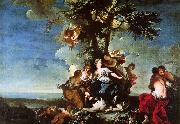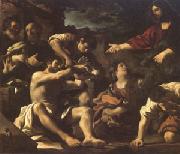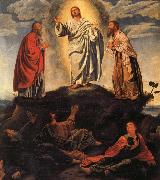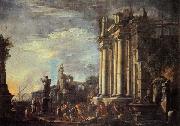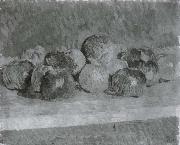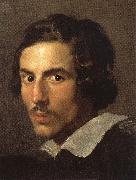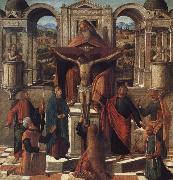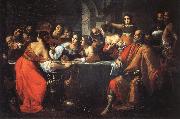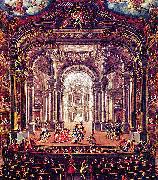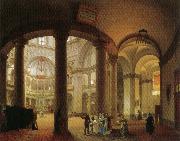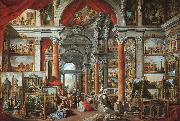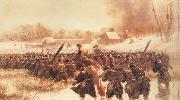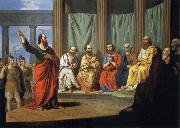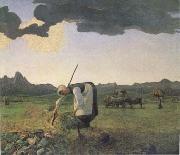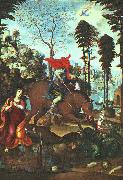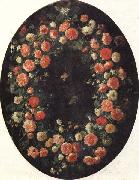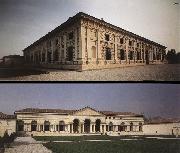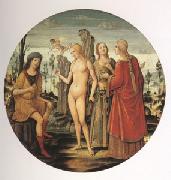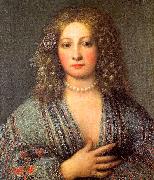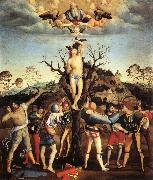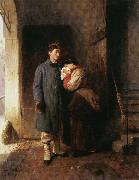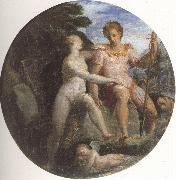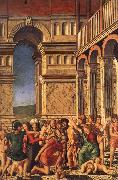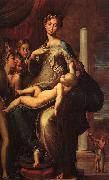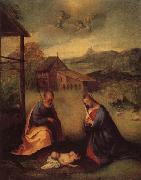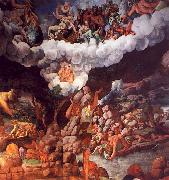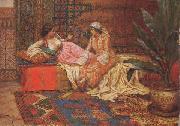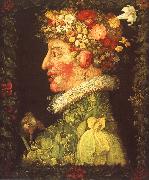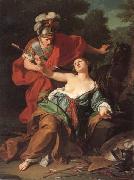|
|
|
|
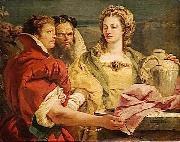 |
Giovanni Domenico Tiepolo
|
|
(August 30, 1727 - March 3, 1804) was a Venetian painter and printmaker in etching. He was the son of artist Giovanni Battista Tiepolo and elder brother of Lorenzo Baldissera Tiepolo..
Domenico was born in Venice, studied under his father, and by the age of 13 was the chief assistant to him. He was one of the many assistants, including Lorenzo, that transferred the designs of his father (executed in the 'oil sketch' invented by the same). By the age of 20, he was producing his own work for commissioners.
He assisted his father in Werzburg 1751-3, decorating the famous stairwell fresco, in Vicenza at the Villa Valmarana in 1757, and in Madrid at the palace of Charles III from 1762-70.
|
|
|
|
|
|
|
|
|
|
|
|
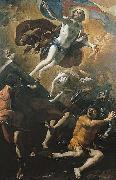 |
Giovanni Lanfranco
|
|
(26 January 1582 - 30 November 1647) was an Italian painter of the Baroque period.
Giovanni Gaspare Lanfranco was born in Parma, the third son of Stefano and Cornelia Lanfranchi, and was placed as a page in the household of Count Orazio Scotti His talent for drawing allowed him to begin an apprenticeship with the Bolognese artist Agostino Carracci, brother of Annibale Carracci, working alongside fellow Parmese Sisto Badalocchio in the local Farnese palaces. When Agostino died in 1602, both young artists moved to Annibale's large and prominent Roman workshop, which was then involved in working on the Galleria Farnese in the Palazzo Farnese gallery ceiling. |
|
|
|
|
|
|
|
|
|
|
|
|
|
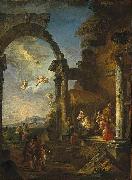 |
Giovanni Paolo Panini
|
|
17 June 1691 - 21 October 1765) was an Italian painter and architect, mainly known as one of the vedutisti .
As a young man, Panini trained in his native town of Piacenza, under Giuseppe Natali and Andrea Galluzzi, and later the stage designer Francesco Galli-Bibiena. In 1711, he moved to Rome, where he studied drawing with Benedetto Luti and became famous as a decorator of palaces, including the Villa Patrizi (1719-1725), the Palazzo de Carolis (1720), and the Seminario Romano (1721-1722). In 1719, Panini was admitted to the Congregazione dei Virtuosi al Pantheon. He taught in Rome at the Accademia di San Luca and the Academie de France, where he influenced Jean-Honore Fragonard. In 1754, he served as the principal of the Accademia di San Luca. Panini died in Rome on 21 October 1765
As a painter, Panini is best known for his vistas of Rome, in which he took a particular interest in the city's antiquities. Among his most famous works are the interior of the Pantheon, and his vedute paintings of picture galleries containing views of Rome. Most of his works, specially those of ruins have a substantial fanciful and unreal embellishment characteristic of capriccio themes. |
|
|
|
|
|
|
|
 |
Giovanni Santi
|
|
(c. 1435 - 1 August 1494) was an Italian painter and decorator, father of Raphael. He was born at Colbordolo in the Duchy of Urbino. He was a petty merchant for a time; he then studied under Piero della Francesca. He was influenced by Fiorenzo di Lorenzo, and seems to have been an assistant and friend of Melozzo da Forle. He was court painter to the Duke of Urbino and painted several altarpieces, two now in the Berlin Museum, a Madonna in the church of San Francesco in Urbino, one at Santa Croce on Fano, one in the National Gallery at London, and another in the gallery at Urbino; an Annunciation at the Brera in Milan; a resurrected Christ in the Museum of Fine Arts, Budapest; and a Jerome in the Lateran. He died in Urbino.
|
|
|
|
|
|
|
|
|
|
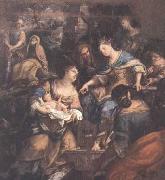 |
Giovanni Tuccari
|
|
Giovanni Tuccari (1667-1743) was an Italian painter during the Baroque period, active in Sicily.
Tuccari was born in Messina. He was the son and pupil of Antonio Tuccari, an obscure painter. He excelled as a battle painter. He died of the plague. He was responsible for the frescos in the Church of San Benedetto in Catania. Other examples of his work include four octagonal paintings in the sanctuary of the Church of S. Antonio, at Castiglione di Sicilia, and La Pinacoteca Zelantea gallery in Acireale.
|
|
|
|
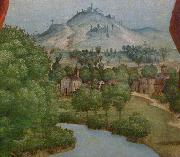 |
Girolamo dai Libri
|
|
(1474/1475 - July 2, 1555) was an Italian illuminator of manuscripts and painter of altarpieces, working in an early-Renaissance style.
He was born and mainly active in Verona. His father was Francesco dai Libri, and was so named because he was an illuminator of books. Girolamo's works were noted by Giorgio Vasari. Girolamo was a pupil of Domenico Morone. Dai Libri painted his first altarpiece, a Deposition from the Cross for Santa Maria in Organo in Verona, at the age of sixteen.
|
|
|
|
|
|
|
|
|
|
|
|
|
|
|
|
|
|
|
|
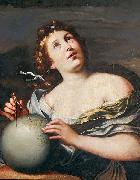 |
Girolamo Troppa
|
|
Girolamo Troppa (1637-1710) was an Italian painter of the Baroque. He was active in Rome. He was a follower of Carlo Maratti. He painted for the church of San Giacomo delle Penitenti, in competition with the son of Giovan Francesco Romanelli. He died in 1710. |
|
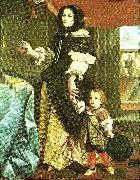 |
gittadini
|
|
In Venezia, 1585, in duodecimo. Cittadini was born in Rome, and died at Florence, 1622, |
|
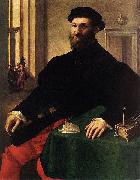 |
Giulio Campi
|
|
(1500 - 5 March 1572) was an Italian painter and architect. His brothers Vincenzo Campi and Antonio Campi were also renowned painters.
The eldest of a family prominent painters, Campi was born at Cremona. His father Galeazzo (1475-1536) taught him the first lessons in art.
In 1522, in Mantua, he studied painting, architecture, and modelling under Giulio Romano. He visited Rome, became an ardent student of the antique, and like Bernardino e distantly related to him e he combined a Lombard and Roman traditions. He collaborated on some works with Camillo Boccaccino, the son of Boccaccio Boccaccino, with whom Campi may also have received training.
Campi is called the "Ludovico Carracci of Cremona" although he preceded the founder of the Eclectics. When but twenty-seven Giulio executed for the church of Sant' Abbondio his masterpiece, a Virgin and Child with Sts. Celsus and Nazarus, a decoration masterly in the freedom of its drawing and in the splendour of its colour. His numerous paintings are grandly and reverently conceived, freely drawn, vigorously coloured, lofty in style, and broadly handled. He was animated in all his work by a deep piety. Numerous of his fresco works are housed in churches of Cremona, Mantua, Milan and in the church of Saint Margaret's, in his native town. Among his chief works are the Descent from the Cross (S. Sigismondo) at Cremona, and the frescoes in the dome of S. Girolamo at Mantua. An altar-piece in S. Sigismondo and his Labours of Hercules were engraved by the celebrated Ghiso, il Mantovano.
He died in Cremona in 1572.
|
|
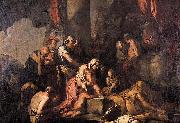 |
Giulio Carpioni
|
|
(1613 - 29 January 1678) was an Italian painter and etcher of the early Baroque era.
Born probably in Venice, Carpioni studied under Alessandro Varotari (il Padovanino) and was also influenced by the work of Simone Cantarini, Carlo Saraceni and Jean Leclerc. He came into contact with Lombard art after a brief visit to Bergamo in 1631. In 1638 he settled in Vicenza and executed most of his work there.
He painted history and bacchanals, and also sacred subjects of a small size, many of which are to be seen in the churches in the Venetian states. Paintings by him may be seen in the Galleries of Augsburg, Dresden, Vienna, Modena, and Florence. He was also an etcher; his best plates being St. Anthony of Padua, Christ on the Mount of Olives, The Virgin reading, and The Virgin with Rosary. He died at Verona. Carlo Carpioni, his son, was also a painter.
Among his important works are the Apotheosis of the Dolfin family (1647) and the Allegory of the Grimani Family (1651), and altarpiece of Sant'Antonio da Padova, a Virgin and two saints, and a Triumph of Silenus in the Gallerie dell Accademia of Venice. He painted a series of canvases for the Oratory of San Nicola da Tolentino in Vicenza.
|
|
|
|
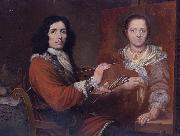 |
Giulio Quaglio
|
|
(1610-1658 or after) was an Italian painter of frescoes.
He was a follower of Tintoretto. He is known to have worked in Vienna, Salzburg, and Ljubljana. His son, Giulio the younger, was born in Como and established himself in the Friuli about the end of the 17th century. He is best known for frescoes at the chapel of the Monte di Piete, at Udine. He died in 1720. They are both part of a large family of artists and architects from the town of Laino, between Lake Garda and Lake Como, and which included Giuseppe Quaglio and his sons Lorenzo the younger, Simon, and Domenico; Lorenzo Quaglio the elder; and Giovanni Maria Quaglio and his son.
|
|
|
|
|
|
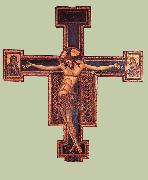 |
GIUNTA PISANO
|
|
Italian painter, Pisan school (active c. 1229-c. 1254 in Pisa).
|
|
|
|
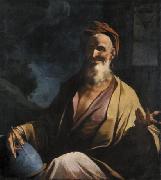 |
Giuseppe Antonio Petrini
|
|
(October 23, 1677- c. 1755-9) was a painter of the late-Baroque, active mainly in Lugano, present-day Switzerland.
St. Andrew
City Museum of Rimini, ItalyWhile born in Carona in Canton Ticino and died in Lugano, both in Switzerland, Petrini belongs to the Northern Italian or Lombard heritage of baroque painting. He possibly apprenticed with Bartolomeo Guidobono after 1700. While some works can be found in Como and Bergamo, most are located in Lugano and the surrounding area. He is also listed between 1711 and 1753 as fabbriciere of the church of Madonna deOnegro in Carona. He often painted "portraits" of historical figures including saints, philosophers, and scientists for patrons. One of his more prominent examples is his depiction of an auster St. Peter emerging from the shadows to pinpoint some lines in the gospel. He painted another St. Peter for the parish church of Dubino. Pietro Ligari classified him among the speculative painters, since these portraits, by nature, were imagined.
|
|
|
|
|
|
 |
Giuseppe Bonito
|
|
Giuseppe Bonito (11 January 1707 - 9 May 1789) was a Neapolitan painter of the Rococo period. Giuseppe Bonito is known for genre depictions on canvas. Many of Gaspare Traversi's paintings had previously been attributed to Bonito.
Bonito was born at Castellammare di Stabia, and, like Traversi, was a student at the large studio of Francesco Solimena. Bonito represented urban scenes with folklore details and figures of commedia dell'arte. Between the 1736 and 1742 Bonito it worked for the family Borboni in the royal palace of Portici. He also painted portraits including one of Maria Amalia di Sassonia, wife of the Charles VII, king of Naples. |
|
|
|







